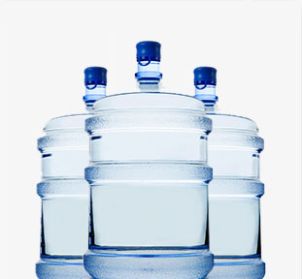
Contaminated Water Symptoms (and Solutions)

Contaminated water symptoms manifest in different ways depending on the problem at hand, but the most common are:
- Odd tastes, such as bitter, salty or metallic
- Unpleasant odors, such as a rotten-egg or swampy smell
- Cloudy or off-colored appearance
The first step in eliminating these issues is to identify the cause — and if you want a detailed, specific look, you’ll need to have a professional water test and consultation. That way, you can get a personalized recommendation on which water filtration solution — for example, reverse osmosis (RO) — is best for you.
If you suspect you have contaminated drinking water, read on to identify symptoms, causes and solutions.
Common Water Problem: Contamination
Contaminated water is tap or drinking water that contains impurities. These may include contaminants such as:*
- Chlorine
- Sulfur
- Arsenic
- Lead
- Iron
- Total dissolved solids (TDS)
- PFOA/PFOS, also known as “forever chemicals”
Common signs of contaminated water include:
- Bad-smelling water, such as a rotten-egg odor
- Discolored or cloudy water
- Rust stains around fixtures and sinks caused by iron
- Bitter or sour-tasting water
- Corrosion on pipes and plumbing
You likely won’t have much trouble spotting these symptoms. However, other contaminated water issues aren’t so easy to identify. That’s because some impurities have no taste, color or odor, which means they can be difficult to detect without a professional water test.
In fact, even if you think you know just what’s causing your tap or drinking water problems, it’s smart to have a comprehensive water test anyway. That’s because obvious symptoms may also hide invisible water supply problems.
Contaminated Water Symptoms and Causes
The good news is that the most common contaminant types aren’t toxic chemicals or heavy metals. Instead, they’re things that may be part of the natural environment or purposefully added to your water source. Here’s a look at a few water supply problems and the contaminants that cause them:
- Metallic taste: If you notice a distinct metal taste, iron might be to blame. This mineral might also make your clothes feel scratchy after washing, cause your water-using appliances to break down and create rust stains on clothes and fixtures.
- Green stains: Copper can also cause drinking water to taste metallic, but it will leave blue-green stains instead of rust-colored marks.
- Rotten egg smell: This unpleasant smell is typically caused by hydrogen sulfide, which may also produce bacteria that corrode your pipes and plumbing.
- Swimming pool taste or smell: Chlorine is added to the municipal water supply to protect public health, so it’s there for a reason. However, too much chlorine can make your water unpleasant for drinking and bathing.
- Cloudiness/sediment: Sometimes, cloudy water can be caused by aeration; other times, it’s a sign of TDS and similar impurities.
Remember that a contaminant may not have obvious symptoms or impact your water source in any noticeable way. For example, arsenic is odorless, tasteless and doesn’t stain, but it may potentially cause health concerns over time.
Want to diagnose your water problems? Try our FREE Water Solutions Finder.
Common Water Problem: Hard Water
Although hard water isn’t commonly considered a contamination issue, it can still be frustrating. That’s because water hardness comes with a long list of symptoms, including:
Skin and Hair Effects
While you can still drink water with high hardness levels, your skin and hair may not feel as healthy as normal. That’s because hard water is caused by high levels of calcium and magnesium, and buildup of these minerals on your hair and skin through showering and hand-washing may lead to:
- Dry, irritated skin
- Dull, lifeless hair
- Dandruff or dry scalp
- Filmy residue left in your hair
Home Effects
Your home can also feel the impacts of hard water, including:
- Limescale or scum buildup around fixtures in the kitchen or bathroom
- Clogged pipes from mineral buildup
- Stains in bathtubs, toilets and sinks
- Streaky or spotty dishes after washing
Spending Effects
In addition to impacting your body, home and belongings, water hardness can negatively affect your wallet. That’s because hard minerals reduce the effectiveness of soap and cleaning supplies, which means you have to buy and use more to keep your home and body feeling clean. It can also lead to costly repairs or replacement of water-using appliances.
Where Do Water Problems Come From?
You may notice different water problems depending on where you live and where your water comes from. Here are just a few examples:
Chlorine
Remember that chlorine helps promote cleaner water and protect public health; it’s a common element of water treatment for municipal supplies. However, if you have a well, it’s your responsibility to protect your own water quality; your well isn’t overseen or managed by any organization. That means a private water supply likely won’t have too much chlorine — or any at all.
Water Hardness
Hard water is caused by mineral content (calcium and magnesium) that can be picked up throughout the water cycle. This mineral content varies between geographical locations, which means your area may have higher or lower hardness levels than the rest of your country. While water hardness can be a problem for both municipal and well water users, it’s more common for the latter.
Other Contaminants
Many things can cause contaminated water, and the type and intensity of symptoms depend entirely on what got into your water supply. For example, if you have a private well near a farm or agricultural business, runoff might create polluted water and lead to waterborne disease with the potential for human infection. Fortunately, professional testing can help identify issues such as total coliform bacteria — including E. coli, a sign of sewage or animal waste in your water.
Treating Water Symptoms
You don’t have to switch to bottled water to escape water contamination symptoms like those listed above. Instead, take control of your water quality by starting with a professional water test:
- Free, In-Home Water Test and Consultation: Schedule an appointment online or over the phone with a Culligan® Water expert at a time that’s most convenient for you. During your appointment, a sample of your water will be collected and tested right at your tap. Once the results are available — typically within 30 minutes — your Culligan expert will discuss the best solutions for addressing any water issues you may have.
- Laboratory Water Analysis: Our IL-EPA certified lab test helps uncover harder-to-detect contaminants such as arsenic and lead. Based on your location, concerns and results from the in-home water test, your Culligan expert will determine whether lab testing is necessary. If conducted, your water sample will be sent to our lab for in-depth testing. You should receive results in approximately three days, at which time a Culligan expert can discuss their recommendations with you.
Once your test is complete, it’s time to choose the right water solution for you.
- Water Filtration: You have multiple water filtration options depending on your needs. If you have specific water issues such as sulfur, iron or chlorine, you may want whole-home filtration; if you have problems related to drinking water — including lead and arsenic — an RO system is recommended.
- Water Softening: You can choose a water softener based on your water’s hardness levels, your pipe size, and water usage.
Want Better Water? Start Here
Water contamination can take many forms, from unpleasant tastes and smells to invisible impurities that may impact your health. The good news is that you don’t have to guess what you’re drinking, cleaning and bathing with. Even if you don’t have a public health organization looking out for your water supply, as is the case for well users, you can rely on a water test. From there, it’s easy to choose the right solutions for your home, including filtration and softening.
Ready to take that first step? Schedule your free, in-home water test and consultation today.
*Contaminants may not be present in your drinking water.
Related Articles
How To Prevent White Residue on Dishes
6 min read
Limescale Causes, Effects and Solutions
6 min read
Find A Location Near Me

Schedule Your Free
In-Home Water Test
Get better water in your home by scheduling an appointment with your local Culligan Water Expert.
Discover More
See All Articles

How To Prevent White Residue on Dishes
If you’ve noticed white residue on dishes, don’t blame your dishwasher detergent. The culprit is likely hard water — a high concentration of calcium and magnesium in your water supply. […]
6 min read

Explore

Explore
Our Products

Water Softeners
With any of our soft water systems, get more out of your water-using appliances while spending less on energy and detergent.
View Products

Water Delivery
There’s never been a better time to enjoy the convenience of scheduled bottled water deliveries from the Culligan® Water Experts
View Products

Water Filtration Systems
Culligan's water filtration systems have improved water quality for thousands of families worldwide.
View Products
